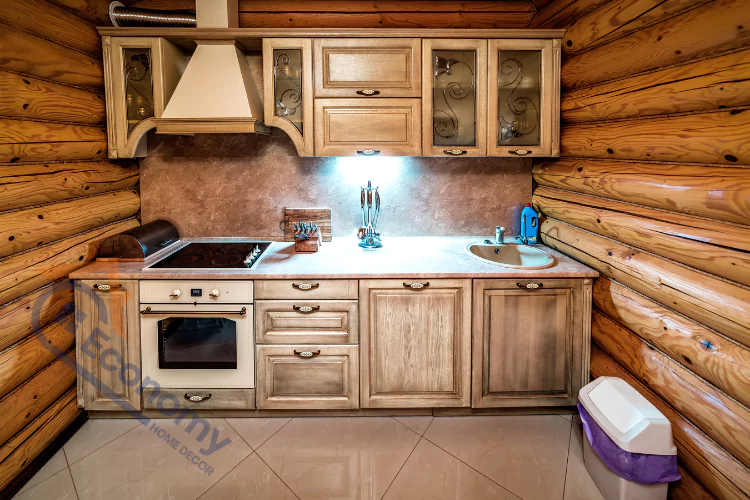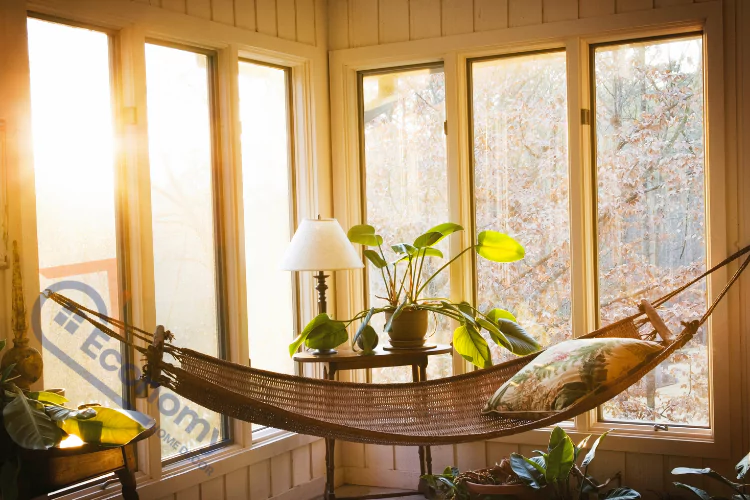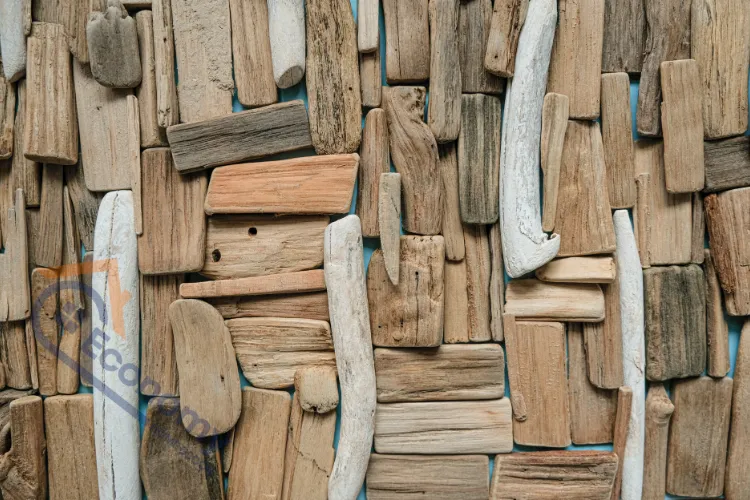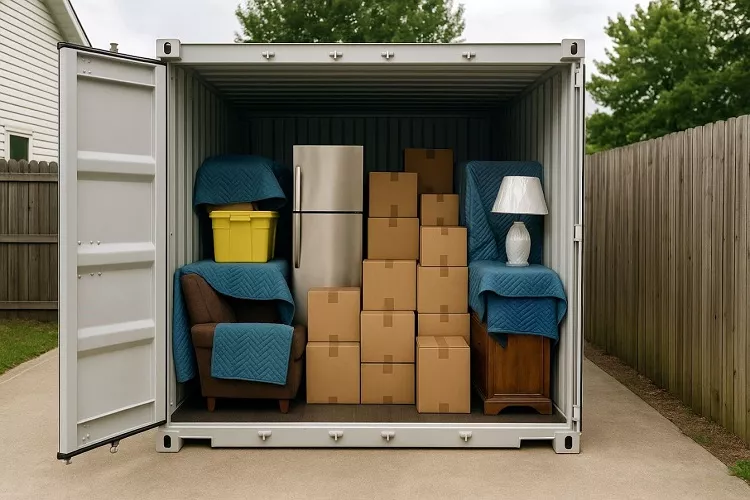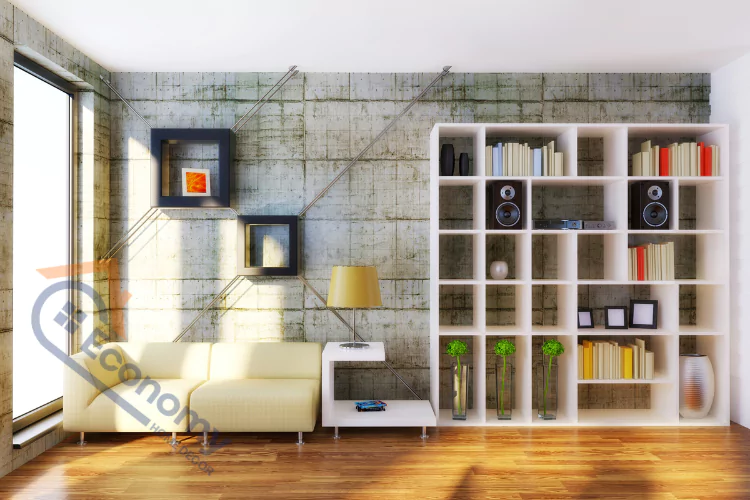There’s something truly magical about stepping into a well-decorated cabin. Whether it’s nestled in the mountains, tucked away by a lake, or hidden deep in the forest, a thoughtfully designed cabin becomes more than just a retreat—it becomes a sanctuary. Cabin decorating ideas blend rustic charm with modern comfort, creating spaces that feel both timeless and inviting. From traditional log cabin aesthetics to contemporary mountain homes, the art of cabin decoration lies in balancing natural materials, cozy textures, and functional design.
The beauty of decorating cabin ideas extends beyond mere aesthetics. These spaces tell stories through weathered wood, vintage finds, and handcrafted details. Every element, from the stone fireplace to the hand-woven rugs, contributes to an atmosphere that celebrates both nature and comfort. Whether you’re working with a weekend getaway or a full-time mountain residence, understanding the principles of cabin design will help you create a space that feels authentically yours while honoring the natural beauty that surrounds it.
Key Takeaways
- Natural materials like wood, stone, and leather form the foundation of authentic cabin decor
- Layered textures and warm lighting create the cozy atmosphere cabins are known for
- Mixing vintage and modern elements adds personality while maintaining functionality
- Color palettes inspired by nature work best in cabin settings
- Every room benefits from incorporating rustic elements while meeting practical needs
Understanding the Cabin Aesthetic
The foundation of successful decorating ideas for cabins starts with understanding what makes cabin style so appealing. This aesthetic celebrates the beauty of natural imperfection, where weathered wood tells stories and handmade items add character. Unlike perfectly polished interior designs, cabin decor embraces the rustic charm that comes from materials that have aged gracefully over time.
Authenticity is the cornerstone of great cabin design. This means choosing materials and furnishings that feel genuine rather than manufactured to look rustic. Real wood beams, natural stone, and vintage textiles create an atmosphere that can’t be replicated with artificial alternatives. The goal is to create spaces that feel like they’ve evolved naturally over time, where each piece has been carefully chosen for both beauty and function.
Cabin bathroom decor ideas often incorporate elements like copper fixtures, reclaimed wood vanities, and stone accents that echo the natural environment. Similarly, living spaces benefit from furniture that shows the natural grain of wood, leather that develops character with age, and metals that develop a beautiful patina. The key is choosing materials that improve with time rather than showing wear as damage.
Essential Elements of Cabin Interior Design
Successful cabin decorating ideas rely on several key elements that work together to create the perfect mountain retreat atmosphere. Wood serves as the primary material, whether it’s exposed beams, plank walls, or handcrafted furniture. The type of wood matters—pine, cedar, and oak each bring their own character and color to the space. Reclaimed wood adds instant history and personality, while new wood can be treated to achieve that aged appearance.
Stone is another crucial element, appearing in fireplaces, accent walls, or even as decorative elements throughout the space. Natural stone connects the interior to the landscape outside, creating a seamless transition between indoor and outdoor living. Whether it’s fieldstone, river rock, or stacked slate, stone adds texture and visual weight that grounds the entire design scheme.
Decorating a cabin ideas should always include considerations for lighting and textiles. Warm lighting from sources like table lamps, pendant lights, and candles creates the intimate atmosphere that makes cabins so inviting. Textiles—from wool blankets to leather upholstery—add comfort and warmth while contributing to the overall aesthetic. The goal is to layer these elements in ways that feel natural and unforced, creating spaces that invite relaxation and connection.
Living Room Design Concepts
Cabin living room decor ideas center around creating a gathering space that feels both comfortable and connected to nature. The fireplace often serves as the focal point, whether it’s a traditional stone hearth or a more modern steel insert. Arranging seating to face the fireplace encourages conversation and creates a natural gathering spot for family and friends.
Furniture selection plays a crucial role in achieving the right balance between comfort and style. Oversized sofas covered in durable fabrics like canvas or leather provide both comfort and practicality. Coffee tables made from reclaimed wood or wrought iron add character while providing functional surface space. The key is choosing pieces that feel substantial and well-made, avoiding anything that appears flimsy or overly delicate.
Cabin living room decorating ideas should incorporate plenty of storage solutions that don’t compromise the aesthetic. Built-in shelving can display books, vintage collectibles, and family photos while maintaining clean lines. Woven baskets provide hidden storage for blankets and games, keeping the space tidy while adding textural interest. Window treatments should frame views of the natural surroundings while providing privacy when needed—consider simple linen curtains or wooden blinds that complement rather than compete with the view.
Color palettes in living spaces typically draw from the surrounding landscape, incorporating earth tones, forest greens, and warm browns. Accent colors can come from textiles like throw pillows, area rugs, and artwork that reflects the local environment. The goal is to create a space that feels connected to its setting while remaining comfortable for everyday living.
Bedroom Retreat Ideas
Creating restful bedroom spaces requires understanding how log cabin bedroom decorating ideas can transform sleeping areas into peaceful retreats. The bedroom should feel like a sanctuary where natural materials and soft textures combine to promote relaxation. Wood-paneled walls create warmth and character, while exposed beams add architectural interest overhead.
Bedding choices significantly impact the overall feel of cabin bedrooms. Layering different textures—cotton sheets, wool blankets, and down comforters—creates depth and visual interest while ensuring comfort across different seasons. Color schemes typically favor muted earth tones that complement wood finishes, though strategic use of deeper colors like forest green or burgundy can add richness and sophistication.
Cabin bedroom decor ideas often include vintage or antique furniture pieces that add character and history to the space. A weathered dresser, antique mirror, or vintage bedside tables contribute to the authentic cabin feel. Modern amenities can be incorporated discretely, such as built-in USB charging stations in bedside tables or hidden storage solutions that maintain clean lines while providing functionality.
Lighting in bedroom spaces should be layered and adjustable, combining overhead lighting with task lighting for reading and ambient lighting for relaxation. Table lamps with warm bulbs create intimate pools of light, while strategically placed candles add romance and warmth. Window treatments should balance privacy needs with the desire to wake up to natural light and outdoor views.
| Bedroom Element | Traditional Choice | Modern Alternative | Best for |
|---|---|---|---|
| Bed Frame | Log or reclaimed wood | Steel with wood accents | Durability and style |
| Lighting | Antler chandeliers | Minimalist pendant lights | Personal preference |
| Storage | Cedar chests | Built-in closets | Space efficiency |
| Window Treatments | Heavy curtains | Wooden blinds | Light control needs |
Kitchen Design Elements
Cabin kitchen decor ideas focus on creating spaces that are both functional for cooking and welcoming for gathering. The kitchen often serves as the heart of cabin life, where meals are prepared and shared, making it essential to balance practical needs with aesthetic goals. Natural materials continue to play a starring role, with wood cabinets, stone countertops, and copper or brass fixtures creating warmth and character.
Storage solutions in cabin kitchens should be both practical and beautiful. Open shelving allows for display of vintage dishware, mason jars, and everyday items that contribute to the overall aesthetic. Closed storage handles the less attractive necessities while maintaining clean lines. The key is finding the right balance between open and closed storage to avoid clutter while showcasing items that enhance the cabin feel.
Cabin kitchen decorating ideas often incorporate vintage or repurposed elements that add character and sustainability to the design. An antique farmhouse table can serve as an island, providing both workspace and gathering spot. Vintage scales, enamelware, and wooden cutting boards serve dual purposes as both functional tools and decorative elements. The goal is to create a kitchen that feels lived-in and loved rather than showroom perfect.
Lighting in kitchen spaces requires careful planning to ensure adequate task lighting while maintaining the warm, inviting atmosphere. Under-cabinet lighting illuminates work surfaces, while pendant lights over islands or dining areas create focal points. Natural light from windows should be maximized, with window treatments that can be opened fully during the day to bring the outdoors inside.
Bathroom Transformation Tips
Cabin bathroom decorating ideas present unique opportunities to create spa-like retreats that celebrate natural materials and rustic charm. These spaces can become some of the most memorable rooms in a cabin when designed thoughtfully. Water and humidity considerations make material choices crucial—selecting finishes that can withstand moisture while maintaining their beauty over time.
Natural stone tiles or reclaimed wood planks create stunning wall treatments that connect the bathroom to the overall cabin aesthetic. Copper or bronze fixtures develop beautiful patinas over time, adding character and authenticity to the space. Vintage-inspired clawfoot tubs or modern soaking tubs surrounded by natural materials create luxurious focal points that invite relaxation after outdoor adventures.
Cabin bathrooms decorating ideas should prioritize both function and atmosphere. Adequate storage for towels, toiletries, and cleaning supplies can be incorporated through built-in niches, vintage cabinets, or repurposed furniture pieces. Mirrors with rustic frames or vintage medicine cabinets add both function and character to the space.
Lighting in bathrooms requires careful planning to provide adequate illumination for grooming tasks while creating a relaxing atmosphere. Sconces beside mirrors provide even lighting for faces, while overhead lighting or chandeliers add ambient illumination. Natural light from windows or skylights should be maximized while ensuring privacy through appropriate window treatments.
Small Cabin Decorating Strategies
Small cabin decorating ideas require creative approaches to maximize both function and style in limited square footage. The key lies in choosing multipurpose furniture, utilizing vertical space effectively, and maintaining visual flow throughout the space. Light colors and strategic mirror placement can help small spaces feel larger and more open.
Furniture selection becomes crucial in small cabins, where every piece must earn its place through both beauty and function. Storage ottomans provide seating and hidden storage, while dining tables with drawers serve multiple purposes. Built-in solutions like window seats with storage underneath or floor-to-ceiling shelving make the most of available space without cluttering the room.
Small cabin decor ideas often involve creative storage solutions that maintain the aesthetic while hiding necessary clutter. Vintage trunks can store linens while serving as coffee tables, while hanging pot racks free up cabinet space and add visual interest to kitchen areas. The goal is to find storage solutions that enhance rather than detract from the overall design.
Color schemes in small cabins should generally favor lighter tones that reflect light and create a sense of spaciousness. However, strategic use of darker colors can create cozy nooks and define different areas within open floor plans. The key is maintaining visual continuity while creating interest and function.
Modern Cabin Design Approaches
Modern cabin decorating ideas blend contemporary design principles with traditional cabin elements, creating spaces that feel both current and timeless. This approach often involves clean lines, minimalist principles, and high-quality natural materials used in sleek, sophisticated ways. The result is spaces that honor cabin traditions while meeting contemporary lifestyle needs.
Glass plays a larger role in modern cabin design, with floor-to-ceiling windows and glass doors that blur the lines between indoor and outdoor living. Steel and concrete might be incorporated alongside wood and stone, creating interesting contrasts and contemporary edge. The key is balancing these modern elements with enough traditional materials to maintain the cabin connection.
Modern cabin decor ideas often feature more neutral color palettes and cleaner lines than traditional cabin designs. Furniture tends toward simpler forms, with comfort achieved through high-quality materials and thoughtful proportions rather than ornate details. Lighting might incorporate more contemporary fixtures while still providing the warm, inviting atmosphere that makes cabins special.
Technology integration becomes important in modern cabin design, with considerations for entertainment systems, WiFi connectivity, and smart home features that can be controlled remotely. The challenge is incorporating these modern conveniences without compromising the retreat-like atmosphere that draws people to cabin living.
Rustic Charm and Vintage Elements
Rustic cabin decorating ideas celebrate the beauty of imperfection and the stories told by well-used materials. This approach embraces weathered wood, vintage textiles, and handmade items that show the marks of time and use. The goal is creating spaces that feel authentic and lived-in rather than designed for display.
Vintage elements can be incorporated throughout cabin spaces, from antique furniture pieces to vintage signage and collectibles. Flea market finds and family heirlooms add personal history and character that can’t be purchased new. The key is curating these elements thoughtfully, choosing pieces that complement each other and contribute to the overall aesthetic rather than creating clutter.
Rustic cabin decor ideas often include handmade and DIY elements that add personal touches and reduce costs. Hand-carved wooden bowls, handwoven textiles, and DIY lighting fixtures contribute to the authentic feel while allowing for personal expression. The goal is incorporating enough handmade elements to feel personal without overwhelming the space.
Color palettes in rustic designs typically favor earth tones and muted colors that complement aged materials. Deep reds, forest greens, and warm browns create cozy atmospheres, while cream and beige provide neutral backgrounds that allow vintage pieces to shine. The key is choosing colors that feel natural and unforced.
Seasonal Decorating Concepts
Decorating ideas for a cabin should account for seasonal changes that can transform the space throughout the year. Summer might call for lighter textiles, fresh flowers, and outdoor living preparations, while winter focuses on cozy layers, warm lighting, and indoor comfort. The key is creating flexible spaces that can adapt to seasonal needs and activities.
Spring and summer decorating might involve swapping heavy wool blankets for lighter cotton throws, incorporating fresh greenery and flowers from the surrounding landscape, and opening up outdoor living spaces for entertaining. Outdoor furniture, fire pits, and dining areas become extensions of the indoor living space during warmer months.
Cozy cabin decorating ideas become especially important during fall and winter months when the cabin serves as a warm refuge from harsh weather. Additional layers of textiles, increased candle usage, and hearty seasonal decorations create atmosphere and comfort. The goal is making the cabin feel like a warm embrace during cold months.
Holiday decorating in cabin settings often involves natural materials like pine boughs, pinecones, and branches that complement the existing aesthetic. Rather than competing with the cabin’s natural beauty, seasonal decorations should enhance and celebrate it. Simple, natural decorations often prove more effective than elaborate artificial alternatives.
DIY Projects and Personal Touches
DIY cabin decor ideas provide opportunities to add personal touches while staying within budget and creating unique elements that can’t be purchased elsewhere. Simple projects like creating custom picture frames from reclaimed wood, making candle holders from mason jars, or crafting throw pillows from vintage fabrics add personality and authenticity to cabin spaces.
Repurposing and upcycling projects align perfectly with cabin aesthetics while promoting sustainability. Old ladders can become unique shelving units, vintage suitcases transform into storage solutions, and reclaimed wood finds new life as accent walls or furniture pieces. The key is choosing projects that match skill levels while contributing meaningfully to the overall design.
Decorating log cabins ideas often include creating custom storage solutions that address specific needs while maintaining aesthetic appeal. Built-in bench seating with storage underneath, custom mudroom solutions, and handcrafted organizers help maintain the clean, uncluttered look that makes cabins feel peaceful and organized.
Personal collections and family items deserve special consideration in cabin decorating schemes. Vintage tools, family photographs, and travel mementos can be displayed in ways that tell stories and add personal meaning to spaces. The goal is incorporating these items thoughtfully rather than creating cluttered displays that compete for attention.
Color Schemes and Natural Palettes
Cabin style decorating ideas typically revolve around color schemes inspired by the natural environment surrounding the cabin. Earth tones provide the foundation, with various browns, greens, and creams creating a palette that feels connected to the landscape. These neutral bases allow for accent colors that can change seasonally or reflect personal preferences.
Forest greens work particularly well in cabin settings, whether used as accent colors in textiles and accessories or as dominant colors in specific rooms. Deep hunter greens, sage greens, and olive tones all complement wood finishes while creating connections to the natural environment. These colors work especially well in bedrooms and bathrooms where a sense of tranquility is desired.
Ideas for cabin decor should consider how different colors affect the mood and perceived size of spaces. Lighter colors can make small cabins feel more spacious, while darker colors create intimacy and coziness in larger spaces. The key is understanding how color choices impact both aesthetic appeal and the functional feel of different rooms.
Accent colors provide opportunities to inject personality and seasonal variation into cabin spaces. Warm oranges and reds might appear in fall decorations, while blues and whites could highlight summer lake themes. The goal is using accent colors to enhance rather than compete with the natural color palette established by wood and stone materials.
Lighting Design for Ambiance
Lighting design plays a crucial role in creating the warm, welcoming atmosphere that defines great cabin interior decorating ideas. Layer different types of lighting—ambient, task, and accent—to create flexible spaces that can adapt to different activities and moods throughout the day. Natural light should be maximized during daylight hours, while artificial lighting creates cozy atmospheres for evening relaxation.
Warm light temperatures (2700K-3000K) work best in cabin settings, creating the golden glow that makes spaces feel inviting and comfortable. Avoid cool, bright whites that can feel harsh and institutional in cabin environments. Table lamps, floor lamps, and pendant lights with warm bulbs create pools of light that define different areas within open floor plans.
Cabin themed decorating ideas often include unique lighting fixtures that serve as decorative elements while providing functional illumination. Antler chandeliers, wrought iron fixtures, and lantern-style lighting all contribute to the cabin aesthetic while meeting lighting needs. The key is choosing fixtures that complement rather than overpower the overall design scheme.
Candles and fireplaces provide additional atmospheric lighting that enhances the cabin experience. Strategic placement of candles throughout the space creates romantic ambiance for special occasions, while fireplaces provide both warmth and focal points for gathering spaces. Consider the safety implications of open flames and provide adequate ventilation for all burning elements.
Storage Solutions that Enhance Style
Cheap cabin decorating ideas often focus on creative storage solutions that serve double duty as decorative elements. Vintage trunks, wicker baskets, and repurposed furniture pieces provide necessary storage while contributing to the overall aesthetic. The key is finding storage solutions that enhance rather than detract from the cabin atmosphere.
Built-in storage solutions work particularly well in cabin settings, where efficient use of space is often important. Window seats with storage underneath, built-in bookshelves, and custom closet systems can be designed to complement existing architectural elements while maximizing functionality. These solutions often provide better long-term value than furniture pieces that may need replacement over time.
Country cabin decorating ideas frequently incorporate open storage that displays beautiful items while keeping them accessible. Vintage dishware displayed on open shelving, books arranged on handcrafted bookcases, and linens stored in antique cabinets all contribute to the lived-in feel that makes cabins special. The goal is balancing display storage with hidden storage for less attractive necessities.
Mudroom and entryway storage becomes especially important in cabin settings where outdoor activities generate gear and equipment that needs organized storage. Custom cubbies, coat hooks, and boot storage help maintain clean indoor spaces while keeping necessary items accessible. These areas can be designed to complement the overall cabin aesthetic while meeting practical needs.
Conclusion
Creating beautiful cabin spaces requires balancing respect for traditional aesthetics with modern comfort and functionality needs. The best cabin decorating ideas celebrate natural materials, embrace imperfection, and create atmospheres that invite relaxation and connection with both nature and loved ones. Whether working with a rustic log cabin or a modern mountain retreat, the principles remain consistent: choose authentic materials, layer textures thoughtfully, and create spaces that feel both personal and welcoming.
Success in cabin decorating comes from understanding that these spaces should feel like refuges from the busy outside world. Every design choice should contribute to creating an atmosphere of peace, comfort, and connection to the natural environment. From small cabin decorating ideas that maximize limited space to modern cabin decor ideas that blend contemporary style with traditional charm, the goal is always creating spaces that feel authentically yours while honoring the cabin tradition.
Remember that the best cabin interiors evolve over time, with each addition telling part of your story and contributing to the overall atmosphere. Whether you’re incorporating family heirlooms, flea market finds, or custom-built elements, the key is choosing pieces that enhance the sense of refuge and relaxation that makes cabin living so appealing.
Frequently Asked Questions
Natural materials like wood and stone, warm lighting, comfortable textiles, and authentic vintage or handmade elements form the foundation of great cabin decor. Focus on creating cozy, welcoming atmospheres that celebrate imperfection and natural beauty.
Use light colors, maximize natural light, choose multipurpose furniture, and incorporate vertical storage solutions. Mirrors can help small spaces feel larger, while maintaining visual flow between areas prevents the space from feeling chopped up.
Earth tones inspired by nature work best, including various browns, greens, and creams. Forest greens, warm grays, and rich burgundies can add depth while maintaining the natural connection that makes cabin interiors special.
Choose modern elements with clean lines and natural materials, hide technology when possible, and maintain the overall warm atmosphere through lighting and textiles. The key is integrating modern conveniences without compromising the cabin’s retreat-like feel.
Display collections and family items thoughtfully, choosing pieces that complement the overall aesthetic rather than creating clutter. Vintage tools, family photos, and travel mementos can be incorporated as part of larger design schemes rather than overwhelming displays.

